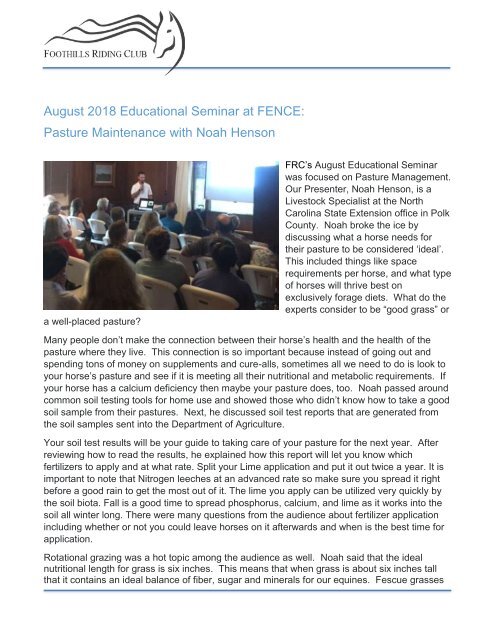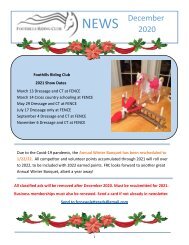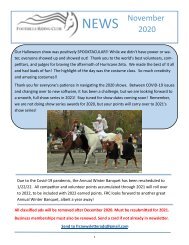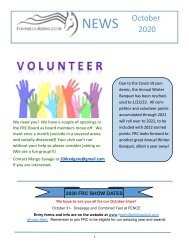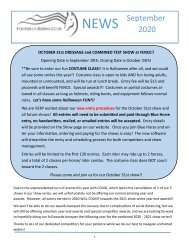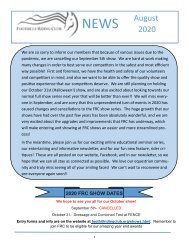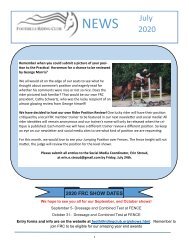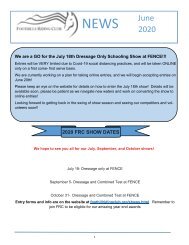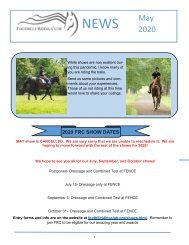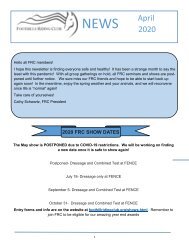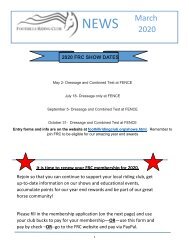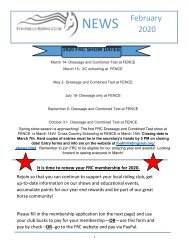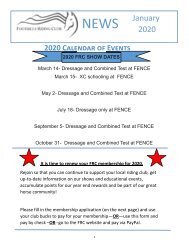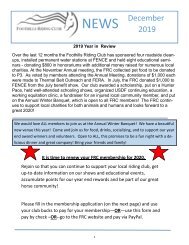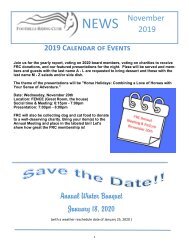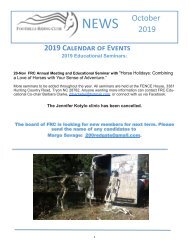September 2018 FRC Member Newsletter
You also want an ePaper? Increase the reach of your titles
YUMPU automatically turns print PDFs into web optimized ePapers that Google loves.
August <strong>2018</strong> Educational Seminar at FENCE:<br />
Pasture Maintenance with Noah Henson<br />
a well-placed pasture?<br />
<strong>FRC</strong>’s August Educational Seminar<br />
was focused on Pasture Management.<br />
Our Presenter, Noah Henson, is a<br />
Livestock Specialist at the North<br />
Carolina State Extension office in Polk<br />
County. Noah broke the ice by<br />
discussing what a horse needs for<br />
their pasture to be considered ‘ideal’.<br />
This included things like space<br />
requirements per horse, and what type<br />
of horses will thrive best on<br />
exclusively forage diets. What do the<br />
experts consider to be “good grass” or<br />
Many people don’t make the connection between their horse’s health and the health of the<br />
pasture where they live. This connection is so important because instead of going out and<br />
spending tons of money on supplements and cure-alls, sometimes all we need to do is look to<br />
your horse’s pasture and see if it is meeting all their nutritional and metabolic requirements. If<br />
your horse has a calcium deficiency then maybe your pasture does, too. Noah passed around<br />
common soil testing tools for home use and showed those who didn’t know how to take a good<br />
soil sample from their pastures. Next, he discussed soil test reports that are generated from<br />
the soil samples sent into the Department of Agriculture.<br />
Your soil test results will be your guide to taking care of your pasture for the next year. After<br />
reviewing how to read the results, he explained how this report will let you know which<br />
fertilizers to apply and at what rate. Split your Lime application and put it out twice a year. It is<br />
important to note that Nitrogen leeches at an advanced rate so make sure you spread it right<br />
before a good rain to get the most out of it. The lime you apply can be utilized very quickly by<br />
the soil biota. Fall is a good time to spread phosphorus, calcium, and lime as it works into the<br />
soil all winter long. There were many questions from the audience about fertilizer application<br />
including whether or not you could leave horses on it afterwards and when is the best time for<br />
application.<br />
Rotational grazing was a hot topic among the audience as well. Noah said that the ideal<br />
nutritional length for grass is six inches. This means that when grass is about six inches tall<br />
that it contains an ideal balance of fiber, sugar and minerals for our equines. Fescue grasses


